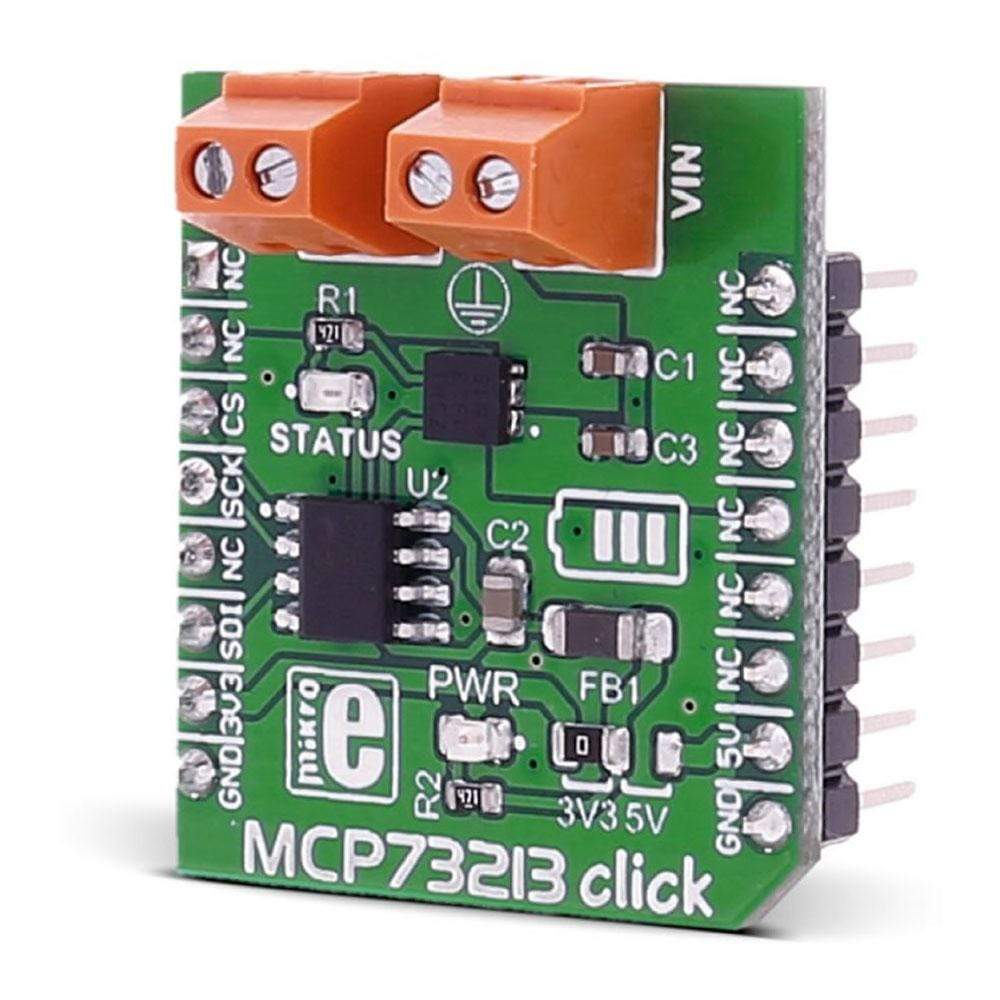
Key Features
Overview
The MCP73871 Click Board™ is a fully integrated solution for system power delivery and Li-Po/Li-Ion battery charge management. The Click Board™ features many Li-Po/Li-Ion battery charging optimisation, used to maximise the battery life. Some of the MCP73871 Click Board™ features include constant current and voltage charging algorithms, over-voltage protection, automatic end of charge control, automatic recharge feature, preconditioning for depleted cells and thermal management.
Downloads
Das MCP73871 Click Board™ ist eine vollständig integrierte Lösung für die Systemstromversorgung und das Lademanagement von Li-Po-/Li-Ion-Akkus. Das Click Board™ bietet zahlreiche Ladeoptimierungen für Li-Po-/Li-Ion-Akkus zur Maximierung der Akkulebensdauer. Zu den Funktionen des MCP73871 Click Board™ gehören Ladealgorithmen für Konstantstrom und -spannung, Überspannungsschutz, automatische Ladeschlusskontrolle, automatische Aufladefunktion, Vorkonditionierung für entladene Zellen und Wärmemanagement.
| General Information | |
|---|---|
Part Number (SKU) |
MIKROE-2858
|
Manufacturer |
|
| Physical and Mechanical | |
Weight |
0.02 kg
|
| Other | |
Country of Origin |
|
HS Code Customs Tariff code
|
|
EAN |
8606018712113
|
Warranty |
|
Frequently Asked Questions
Have a Question?
Be the first to ask a question about this.

